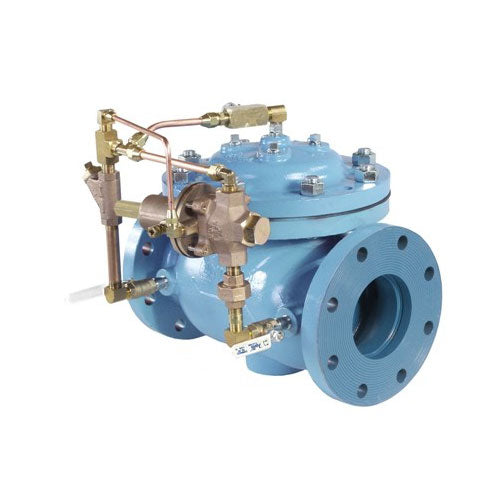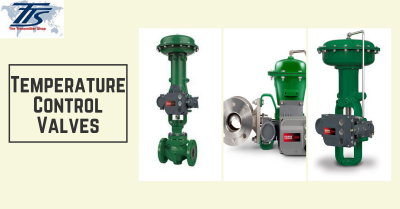Innovative Control Valves: Enhancing Accuracy and Integrity
Innovative Control Valves: Enhancing Accuracy and Integrity
Blog Article

Maximize Energy Financial Savings and Comfort With Advanced Structure Automation Controls
In the realm of contemporary design and facility monitoring, the combination of sophisticated building automation manages stands as a critical improvement. The convergence of innovation and sustainability has actually birthed a new period where power performance, comfort optimization, and functional streamlining are no more possible truths yet far-off ambitions. By utilizing the power of automation, buildings can adjust, respond, and advance in manner ins which were once inconceivable. The possibility for substantial power savings and boosted comfort is not simply an assurance but a possibility waiting to be fulfilled. This paradigm change in building management holds the key to unlocking a world where ecological conscientiousness and resident well-being harmoniously exist side-by-side within the walls of our structures.
Power Efficiency Benefits
Energy performance benefits can dramatically lower power intake and functional prices in buildings. Energy-efficient systems, such as innovative structure automation controls, can optimize the use of sources like illumination, air conditioning, and heating, leading to reduced energy expenditures over time.
Furthermore, improved energy effectiveness can prolong the life-span of building tools and systems. By operating much more effectively, heating and cooling systems, lighting fixtures, and other structure parts experience much less wear and tear, resulting in minimized upkeep and replacement expenses. Furthermore, energy-efficient structures frequently regulate greater property values and rental rates, offering long-term economic benefits to proprietors.
Additionally, energy performance can enhance occupant comfort and efficiency. Correctly managed interior settings with optimum illumination and thermal problems create a more enjoyable and helpful office, bring about enhanced employee satisfaction and efficiency. Overall, the energy performance advantages connected with innovative building automation controls are multifaceted, encompassing expense financial savings, ecological stewardship, and passenger well-being.
Boosted Comfort Control
Enhancing comfort control in structure atmospheres needs a sophisticated combination of advanced automation systems for ideal resident wellness. By making use of advanced structure automation controls, centers can customize the indoor environment to meet the particular demands and choices of occupants. These systems allow specific law of temperature, illumination, and ventilation, producing a comfortable and effective environment. Occupant complete satisfaction and efficiency are closely connected to thermal convenience, making it vital to have systems in position that can adapt to altering conditions in real-time.
Enhanced comfort control goes past standard temperature level adjustments. It includes features such as individualized settings, tenancy sensing units, and natural light application to develop a receptive and dynamic atmosphere. By integrating these sophisticated controls, structures can not only boost convenience but likewise enhance power performance by optimizing system operations based upon actual tenancy and usage patterns. Ultimately, prioritizing resident comfort with sophisticated automation systems results in a much more satisfying and much healthier interior atmosphere.
Functional Performance Improvements

Additionally, the application of real-time tracking and analytics devices allows building drivers to recognize energy inadequacies and functional anomalies immediately. By constantly monitoring energy usage patterns and system performance metrics, adjustments can be made in real-time to enhance power consumption and ensure peak functional Related Site performance. control valves. Furthermore, integrating demand feedback methods right into building automation controls can additionally improve functional efficiency by dynamically readjusting power usage based upon grid conditions and pricing signals
Indoor Environment Optimization
Reliable indoor climate optimization is a fundamental aspect of structure automation controls, ensuring owners' convenience and health while making the most of power cost savings. By using advanced sensors and controls, constructing automation systems can continually readjust and check temperature, moisture levels, air quality, and ventilation to develop an ideal indoor atmosphere. Maintaining constant and comfortable problems not just improves occupant complete satisfaction yet also enhances productivity and general health.
Indoor environment optimization likewise plays a critical duty in energy efficiency. By fine-tuning air flow, cooling, and home heating systems based upon real-time information and tenancy patterns, constructing automation controls can significantly minimize power usage - control valves. Carrying out strategies such as demand-controlled air flow and thermal zoning can aid minimize power waste while making certain that each area of the structure gets the necessary conditioning.

Lasting Setting Development
Building automation manages not just maximize interior environment problems for power effectiveness and passenger convenience yet likewise lay the foundation for producing a sustainable setting with strategic administration of systems and resources. By integrating innovative structure automation technologies, such as sensors, actuators, and smart software program, centers can adjust and keep an eye on energy usage in real-time to minimize waste and reduce their carbon footprint. These systems enable anticipating maintenance, determining prospective problems before they rise and optimizing tools efficiency to enhance durability and performance.
Furthermore, lasting atmosphere creation expands beyond energy administration to include water conservation, waste reduction, and indoor air quality enhancement. Building automation controls can control water usage, discover leakages, and guarantee appropriate waste disposal techniques, contributing to total sustainability efforts. Furthermore, by controlling and keeping track of air flow and filtering systems, these technologies boost passenger wellness and productivity while reducing power usage connected with a/c operations.
Conclusion
In verdict, progressed building automation controls offer substantial benefits in terms of energy savings, convenience control, functional efficiency, indoor environment optimization, and developing a lasting environment. By carrying out these controls, buildings can accomplish optimal performance while lowering power intake and improving passenger convenience. It appears that making use of advanced automation modern technology is vital in enhancing structure performance and creating a more lasting future.
Power performance advantages can significantly lower energy intake and functional expenses in buildings. In general, the energy performance advantages connected with innovative structure automation controls are complex, encompassing cost financial savings, environmental stewardship, and owner well-being.
Furthermore, incorporating demand response approaches into building automation controls can further enhance functional effectiveness by dynamically changing site energy use based on grid problems and prices signals.
Structure automation regulates not just optimize interior environment problems for power effectiveness and passenger comfort yet additionally lay the foundation for producing a lasting setting via tactical administration of systems and resources.In conclusion, advanced structure automation regulates deal significant advantages in terms of power financial savings, comfort control, functional efficiency, indoor environment optimization, and creating a lasting atmosphere.
Report this page